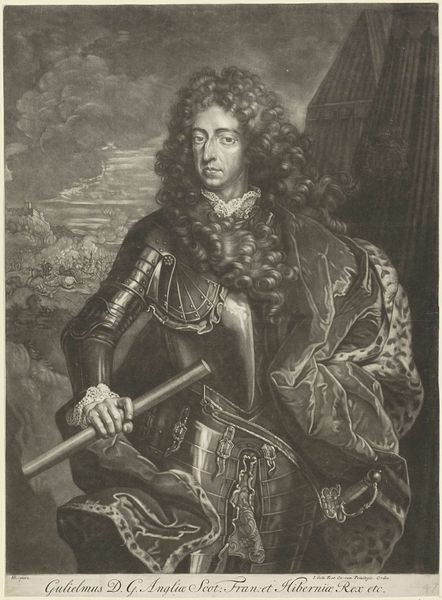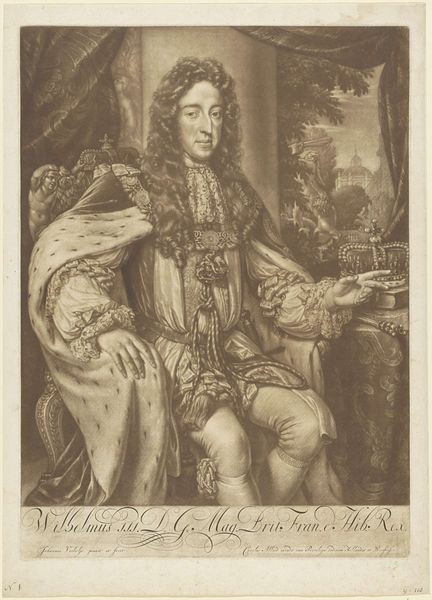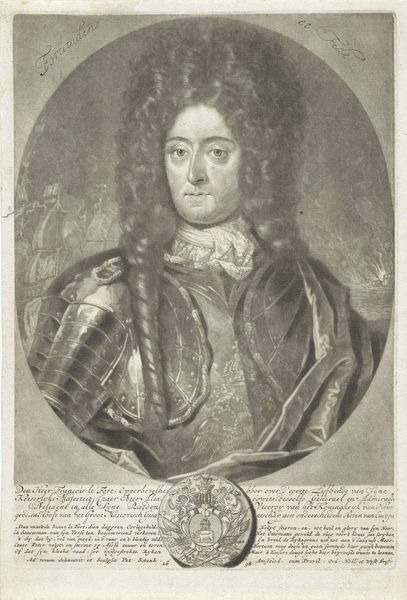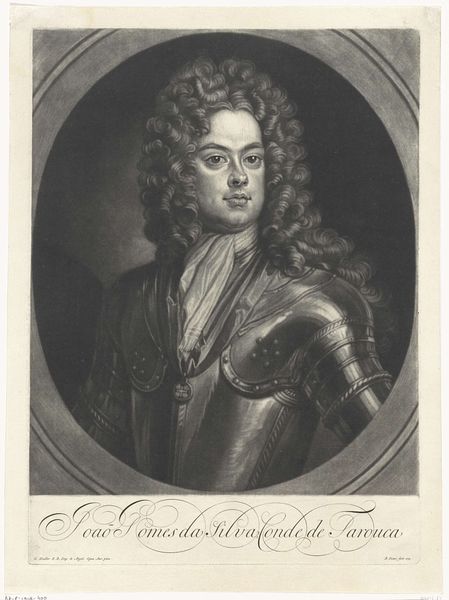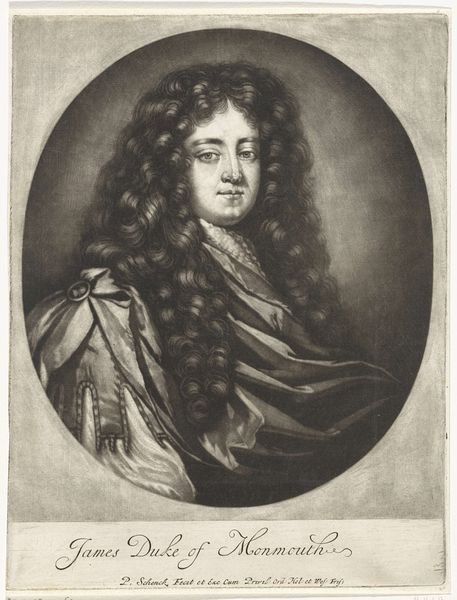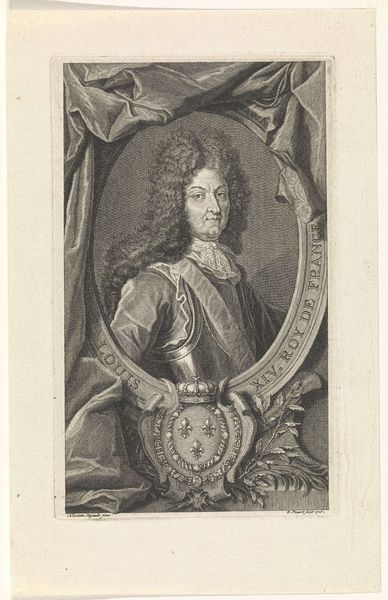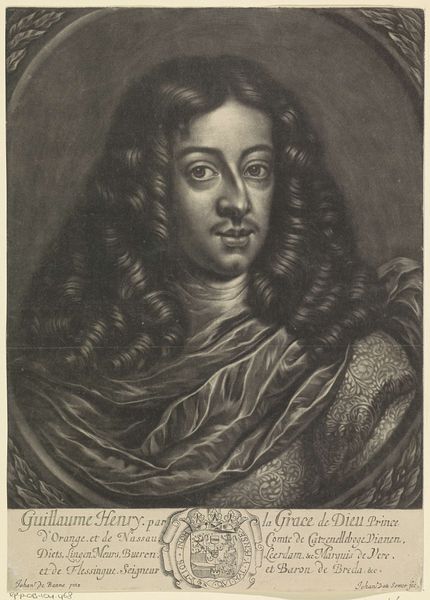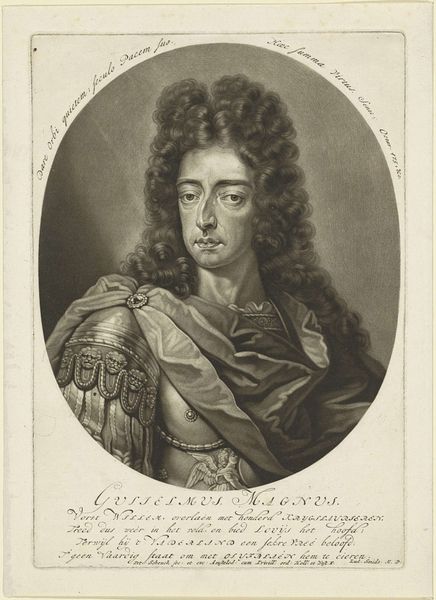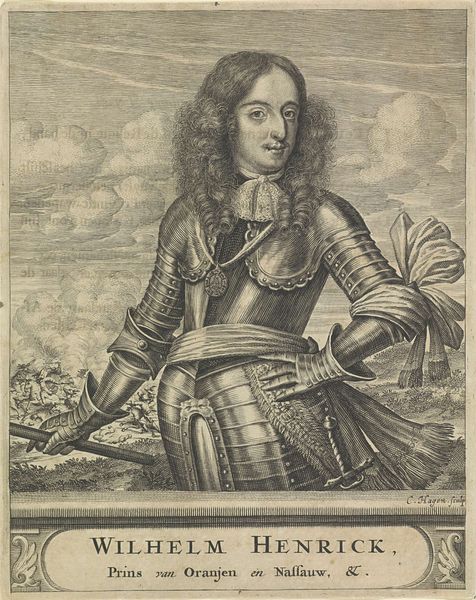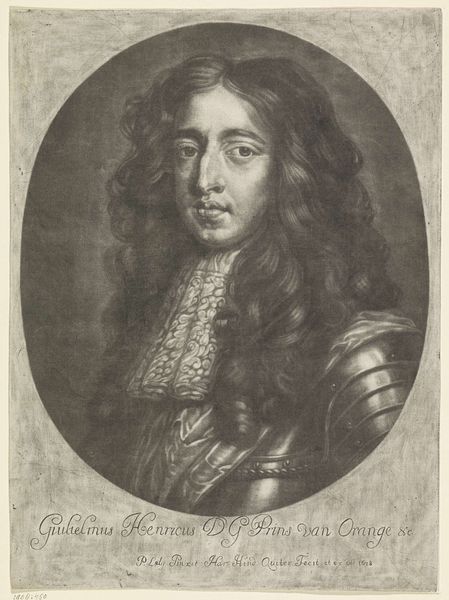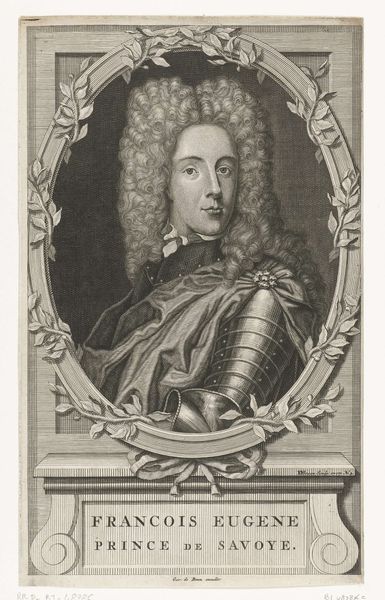
print, engraving
#
portrait
#
baroque
# print
#
figuration
#
history-painting
#
engraving
Copyright: Public domain
Curator: This is an engraving of Prinz Rupprecht Von Der Pfalz, Prince Rupert of the Rhine, created by William Dobson in 1643. Editor: My first impression is one of restrained power; the etching creates incredible details of costume, contrasted with a somewhat soft facial expression. There’s a certain vulnerability there, despite his finery. Curator: Engravings at this time served as an important method for disseminating portraiture beyond the aristocratic circles. This print would have allowed a wider audience to engage with Rupert’s image during the English Civil War. Editor: Exactly. Prints like these helped cultivate a specific persona, aligning him with particular political narratives. The billowing drape, his lavish neckwear - these details actively constructed his image within the social and political landscape. We need to ask about Dobson’s process and how he perceived the image of royalty as one means to sway commoners’ perspectives on power and authority. Curator: Dobson worked primarily as a painter; it is known that he designed for prints and books during the time. To think of his designs translated through the meticulous and demanding work of engraving… Editor: It also speaks to the value placed on dissemination during periods of social change. This wasn't just a portrait for personal enjoyment; it served as visual propaganda, attempting to influence the political consciousness. We are really presented here with the notion of material as a direct source for radical influence on class and equity. Curator: It makes you consider the circulation and reception of this image, especially given the turbulent period in which it was created. How were these distributed? How much influence did an engraving of the Prince really have over political allegiance? Editor: These considerations should challenge our approach in viewing this engraving; one which examines class, labour and materialism as intrinsic for social revolution. We need to address such themes as integral parts in the historical contextualization of artwork itself, rather than peripheral additions. Curator: Agreed. Considering it through this lens, we acknowledge the critical role of this medium beyond simple portraiture. Editor: It's a starting point to investigate the convergence of politics, persona, and accessible artistry within an extremely interesting period.
Comments
No comments
Be the first to comment and join the conversation on the ultimate creative platform.
